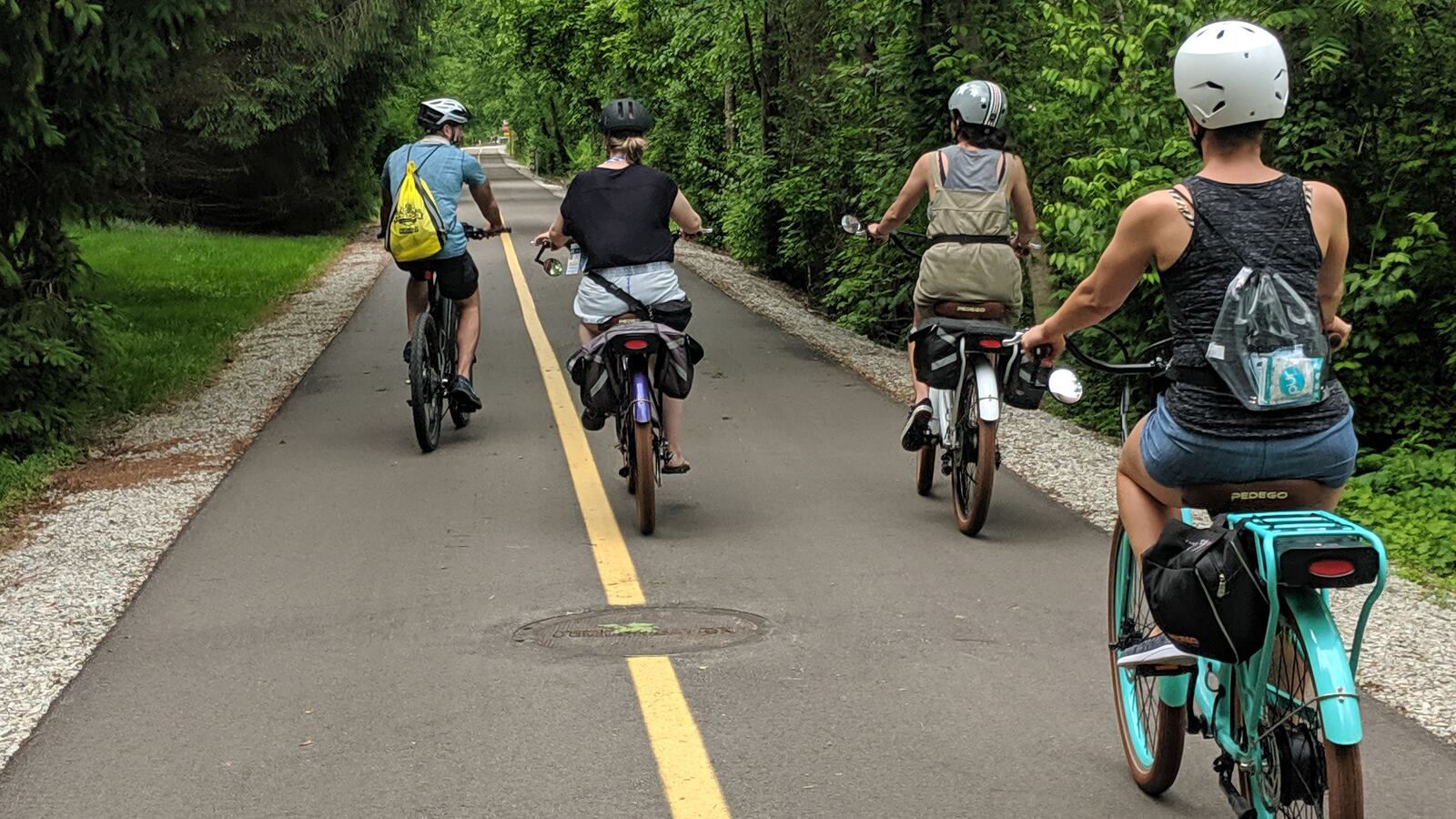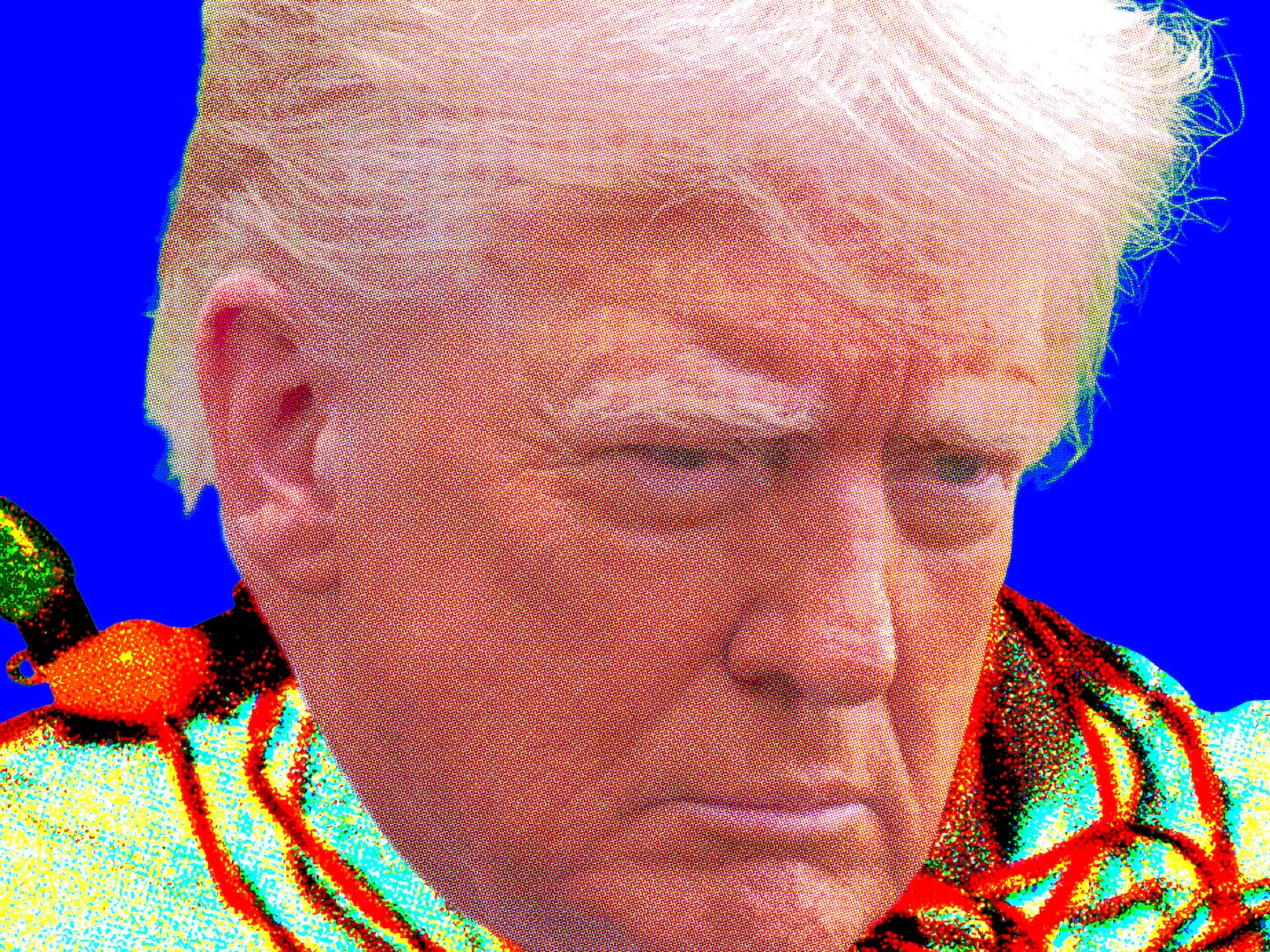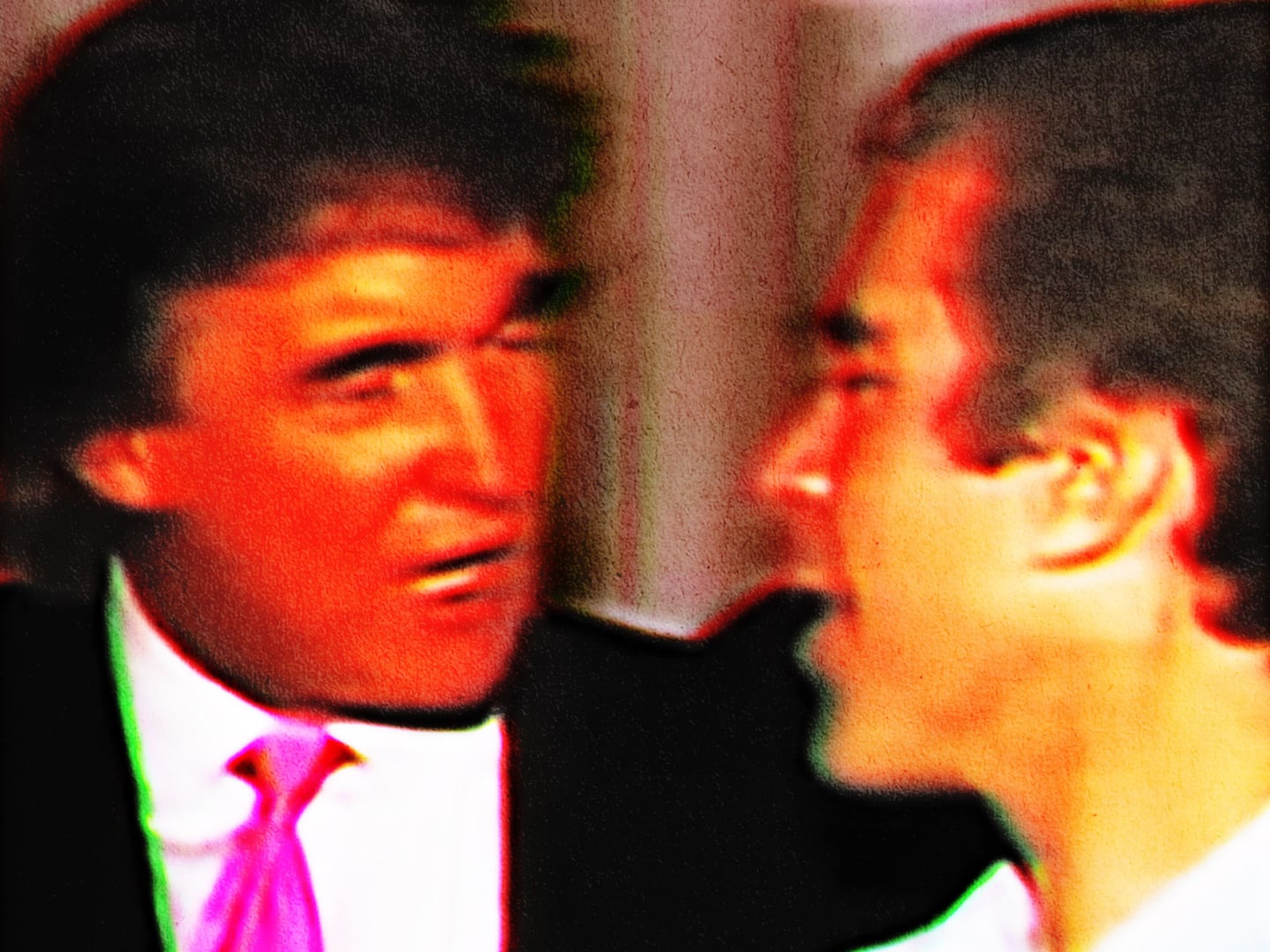Even if Google Maps hadn’t clued me in, I would have known that I was approaching the Indianapolis Motor Speedway. Traffic along West 16th, a main artery to the IMS, was starting to throttle. Throngs of excited people hauling coolers flooded sidewalks. Signs along driveways advertised parking and food.
And it wasn’t even race day yet.

"Biking parade to the Indy 500"
Courtesy Brandon WithrowThis was the pedestrian equivalent of a parade lap—the warm up—a chance to see pre-race practices and events. The official Indy 500, which could be considered a type of high-holy day in Indiana, was two days away. On that day, families would arrive before the sun to find parking and get in line. It would be chaotic, I was told.
Fortunately for me, I was there to join the Bike to the Indy 500, an event highlighting the region’s active transportation—and the ironic possibility of not driving to the big race. More than that, however, this was a chance to get a taste of the life just north of Indy before the big race, where—to my surprise—a type of renaissance is happening.
A good trip, after all, is built on good experiences.
My early experiences with Indiana were, admittedly, not always that memorable. I was raised one state over in Ohio—and returned to Ohio years later—but for much of that time, Indiana was a state I mostly passed through, usually when heading to Chicago. I associated Indiana with a dull drive and the lingering scent of whatever plagued the city of Gary, which had fallen far since The Music Man.
So for years, my Indiana experiences could be called the road trip version of “fly over country”—a phrase that I’ve never liked coming from anyone but another Midwesterner.
Just a few years ago, however, circumstances provided opportunities to see more of the state and Indianapolis eventually became a regular stop. I came to love the city’s great murals, amazing restaurants—like Petite Chou’s American take on French dining—and (of course) Indy Reads Books, where profits go to fund an adult literacy initiative in central Indiana.
While staying in the city of Carmel this time around (about 20 minutes north of Indy), and traveling with my Hamilton County hosts to smaller cities within Indy’s orbit, I was again able to see Indiana from a new perspective on this trip. Many of these towns benefit from an active transportation network centered on the Monon Trail and its connectors. An inductee of the Rails to Trails Hall of Fame, the Monon Trail’s nearly almost 25 miles of thoroughfare is anchored by the city of Sheridan in the North and Indy in the South, with plenty of places and connector trails to jump off on along the way.
Trails, like the Monon, lead to towns that trains once passed through, and this means opportunities to eat. Yes, cycling rail-trails are good for exercise and environmentally sound, but as I see it, they are especially great when you can opt to put those calories back on by dining along the way.

"Rail Restaurant and Bar, accessible from the Monon Trail."
Courtesy Brandon WithrowOne of those possible stops is Westfield, Indiana, currently among the fastest growing cities in Indiana, bringing in new business development and restaurants, like Rail Restaurant and Bar, a former barn gutted to create an elegant, but comfortable Midwestern space with an upscale menu.
Likewise, Carmel is also having a clear moment of rapid revitalization and redevelopment—investing tens of millions to attract hundreds of millions in private projects—with a building boom including offices, apartments, and new restaurants. Carmel is betting on these investments to attract a younger professional crowd with expendable income and a desire to live in the heart of an active, accessible, and bikeable city along the Monon Greenway.
“Our mayor believes that we don’t build for 10, 20, or 30 years, we’re building for a 100, 200 years,” explains Bruce Kimball, who sits on Carmel’s City Council. Kimball is an avid cyclist who provided a brief tour of the city via the Monon.
It is a brave bet contingent on a strong return—an “if you build it, they will come” model—but one that has not come without criticism, as Carmel has taken on significant debt to invest in their future. (The Indiana Department of Local Government Finance lists Carmel as having the state’s fourth highest debt.)
For now, Carmel’s investment appears to be showing up in a charming downtown with an active nightlife, where outdoor concerts flood the Arts & Design District’s streets, stylish rooftop restaurants like 3UP, offer cocktails with a city view while sitting next to a living wall, and creative shared-dish environments like Divvy offer Vegan options in a relaxed setting.
(Perhaps the best breakfast in Carmel, by the way, is Eggshell Bistro, a locally sourced and wonderfully quirky place where the global influences are felt in Chef Larry Hanes’ menu.)
In other words, never underestimate the value of getting off-trail to find good experiences.
But I was in town primarily to see the ecotourism side of the region. And while that was ultimately about the Bike to the Indy 500, it also meant fitting in some kayaking along the White River.
I didn't grow up on kayaking, and so it is a very recent thing for me. In fact, I'm still learning the ropes, but to be honest, I'm already addicted.
The White River Canoe Livery set us up in sit-on kayaks to explore the White River, where we found a relatively wide river outlined by lush green trees, easily navigable currents, and a quaint covered bridge. Frequently packed with kayakers and tubers, we managed to be out on a low-traffic day and great for spotting diving turtles. Also spotted were people chilling out in hammocks hung from bridges over the river, which is apparently a thing.
The day of the Bike to the Indy 500 was one of the most unique cycling experiences I've had. For one, I had never ridden an eBike before and Pedego eBikes were our transportation for the parade.
Carmel’s official bike share program is a traditional, human powered bike service. You can, however, rent Pedego eBikes in town. An eBike hybridizes the cycling experience. You can ride them like any human-powered bike, but you can also combine your pedaling effort with a boost from a motor, or only use the motor for the entire ride.
I admit, I was skeptical of e-bikes and their usefulness and I am partial to my traditional street bike. An eBike is larger—and therefore heavier and has more wind drag—they also have fatter tires, which means more friction. Street bikes with thinner tires, higher tire pressure, and lighter frames are best for strictly active transportation.
Because of my bias—and because I had a lot of calories to burn off from eating my way through the area—I didn’t use the motor on the way to the Indy 500. It felt like cheating.
That opinion, however, evolved by the end of the day, when on the way back from the race to Carmel, I decided to give the Pedego a chance to prove itself, testing all its speeds and features. I found that because of the fat tires, the bikes are fairly balanced, which is helpful for riding a larger bike. The ability to kick up speed quickly whenever you need it—like crossing a main street, for example—is convenient, and also fun. Additionally, if you are using an eBike to get to work, it is nice to let the bike do the hard labor so you don’t have to shower when you arrive.
I will likely stick with my greener traditional bike, but an eBike is still a good experience, more economical, and greener solution than a car.
Rising early on race day, we began our eBike trek from Carmel’s Monon Trail Greenway passing a number of restaurants and coffee shops on our way to Indy’s City Market, the official meeting place for the Bike to the Indy 500. The ride from Carmel by traditional bike is about 16-20 miles, depending on your exact choice of route, and may take up to an hour and a half. It is a flat and comfortable ride.
At City Market we joined a couple hundred other eager cyclists. The event requires registration. This year’s was $13 in advance and $20 the day of the event, though kids under 17 are free if there is one adult with a purchased ticket.
With a police escort, we made our way to the IMS, safely avoiding traffic, passing fire and brimstone street preachers delivering sermons to the masses of people on their way to the race, and locking up the bikes at a gated IMS lot. The exact route changes each year, but this was a very casual, family friendly ride on the road (especially due to the police escort) of around five to six miles from City Market.

"The Indy 500"
Courtesy Brandon WithrowWhen it comes to the Indy 500—and frankly all races involving cars—I confess that I know very little. Years ago my brother-in-law took me to a NASCAR race, which for me mostly consisted of watching cars turn left. This time around, I did learn a few things.
As it turns out, the races are different, especially in terms of the car used. NASCAR’s stock car is an enclosed vehicle built for safety. It can take a hit. This also makes them heavier and not as fast as those in the Indy 500. Cars in the Indy 500 also have exposed wheels and an open roof, which clearly doesn’t bode well for accidents.
And then there is the sheer size of the IMS. The IMS is a massive complex with a seating capacity for 250,000, not including those infield, which can raise the number upwards of 300,000. In other words, it is a small city—or as the IMS put it, it is big enough to hold “14 Big Ten Conference football stadiums” with a little room leftover.

"People in Hammocks hung from a bridge above the White River"
Courtesy Brandon WithrowWith that many people in one place, I was glad to have cycled there.
As the end of the race approached, we darted to our bikes early, hoping to get on the Monon Trail before traffic picked up. There’s no police escort for the ride back, which probably means more opportunities for trail extensions in the future and that may make the return less comfortable for some and require a route change. There were some volunteering to lead groups back afterward, as riding in a group is safer. We picked up coffees and lunch along the trail, kicked up the speed on our eBikes, and flew back to Carmel.
After all, Indianapolis is an amazing city, and I’ll always look for an excuse to return, but there was, and is still, more to experiences and calories to be had up north.






